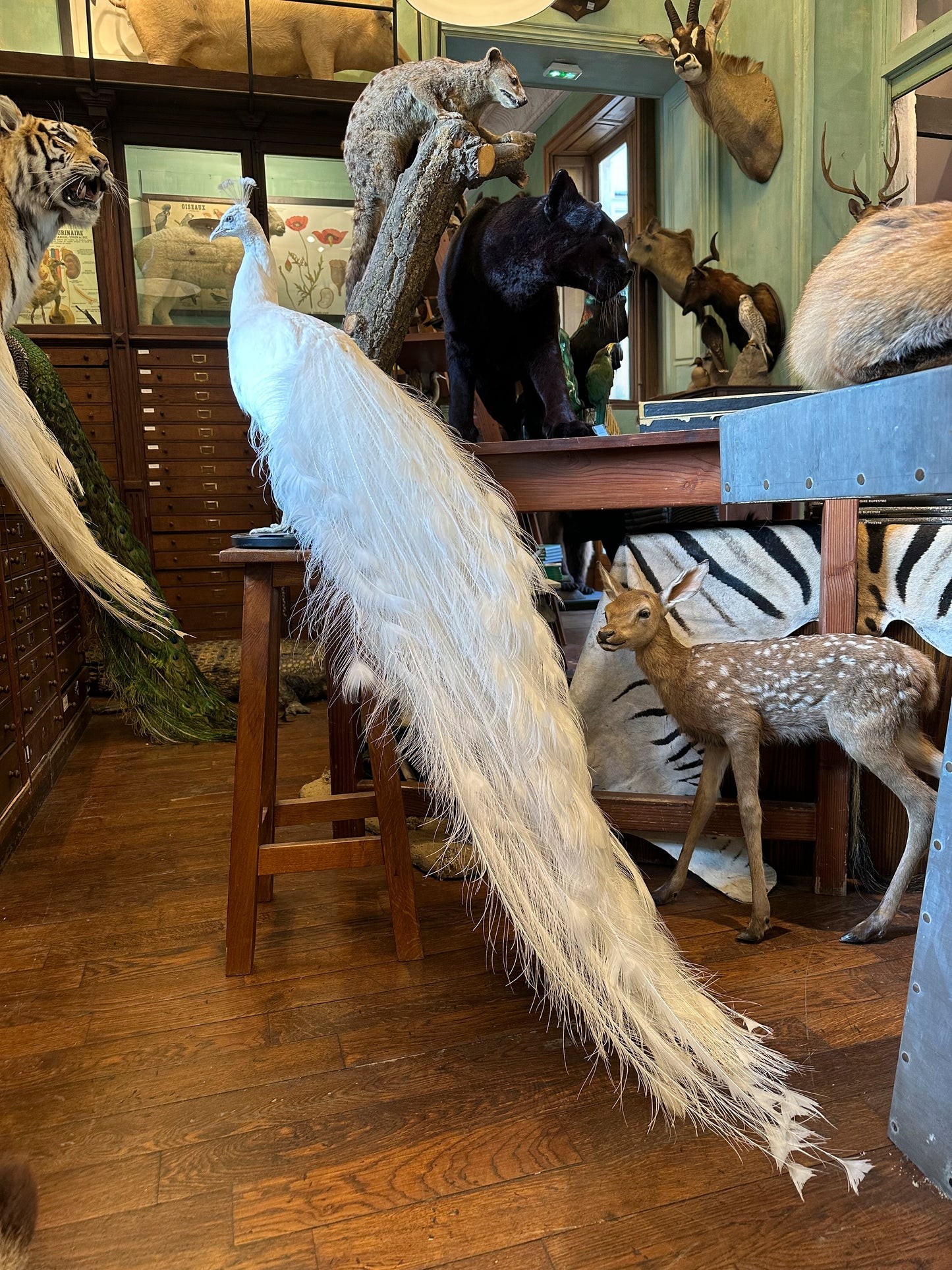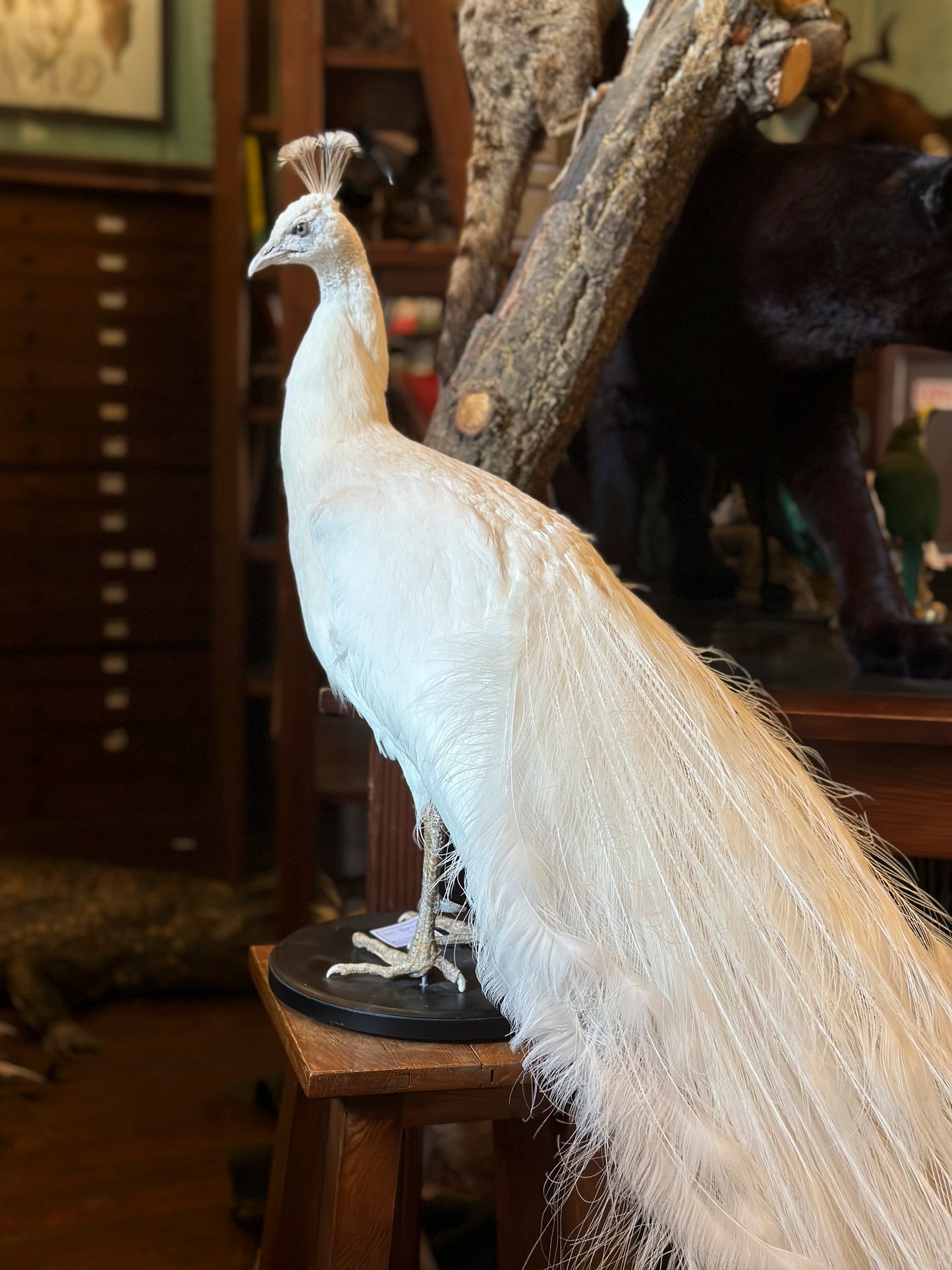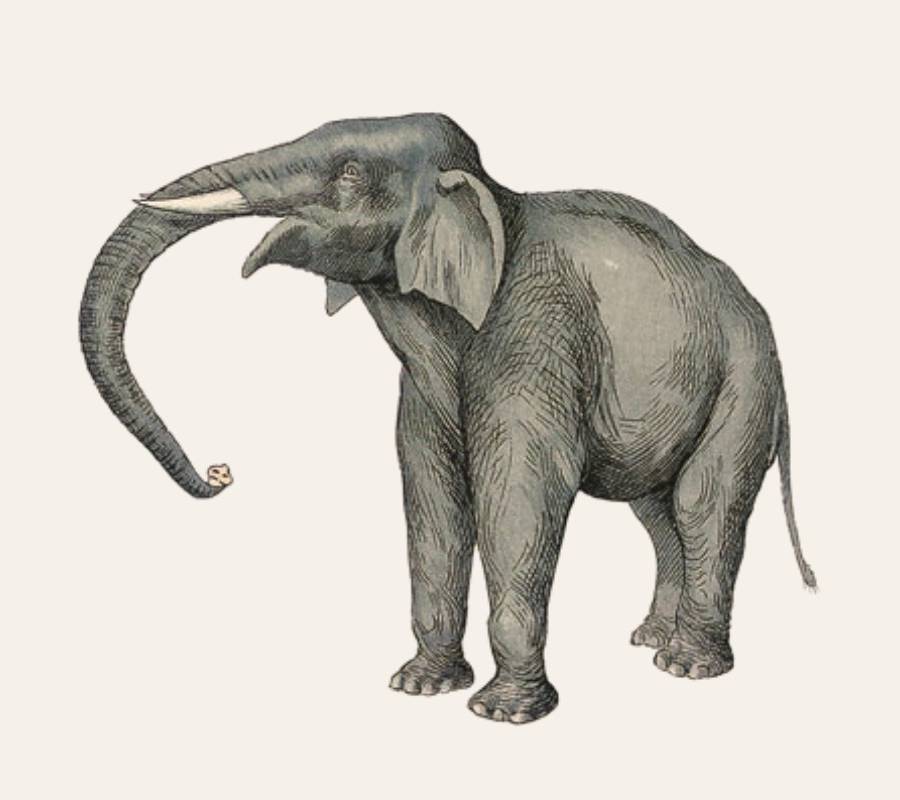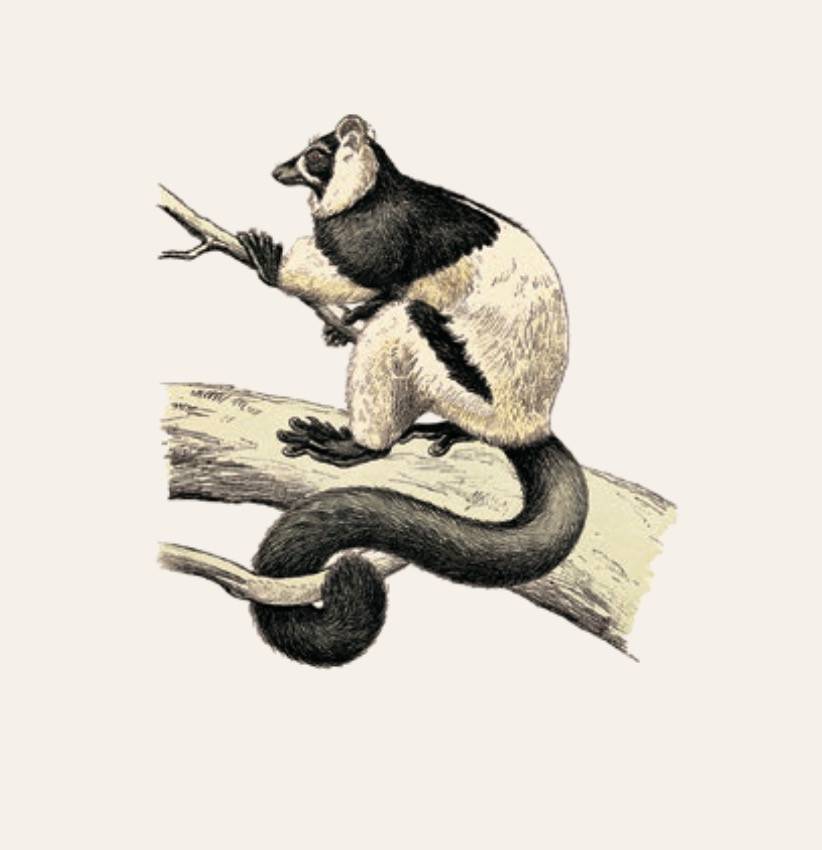White peacock
White peacock
These particularly fragile parts are only available on this site as store pick-ups. If you would like delivery, please contact us for a quotation:
The white peacock (Pavo albus) is a rare variety of the blue peacock. Less common, it is distinguished by its plumage, the result of a genetic trait that limits pigment deposition without altering its natural structure. Native to South Asia, it lives in deciduous forests near waterways. Its majestic appearance remains true to that of the blue peacock, with a robust body, a long, slender neck, and a delicate head adorned with a refined crest. Its plumage, a brilliant white, may sometimes reveal subtle touches of gray or black, adding to its unique charm. As these specimens are much rarer, they are available on a waiting list.





Expertise
Taxidermy
It is the art and science of preparing, preserving and mounting animals to present them in a realistic and aesthetic manner. Taxidermy is used to create stuffed specimens for museums, exhibitions, private collections or educational purposes. It requires in-depth knowledge of animal anatomy.

Expertise
Repair and restoration
When stuffed animals suffer damage such as tears, discoloration or deformation, taxidermists intervene to return them to their original condition. The goal is to restore the appearance and integrity of the specimen ensuring that it maintains its realism and durability.

Expertise
Collection
A taxidermy collection refers to a collection of stuffed animals that are collected and preserved for exhibition, study or research purposes. It can be used educationally by observers and for study or research by scientists.

expertise
Maintenance advice
The parts that leave our workshops are treated internally and externally against parasites, but this last treatment can fade over time.
Here are some maintenance tips: For feathered animals: Every six months, lightly wipe a cloth impregnated with essence C (organic solvent) using
protecting the skin with gloves.
For furry animals: Every six months, remove the dust with a hair dryer at low intensity and in the cold setting, and pass over the hair a cloth impregnated with essence C (organic solvent), protecting the skin with gloves.




